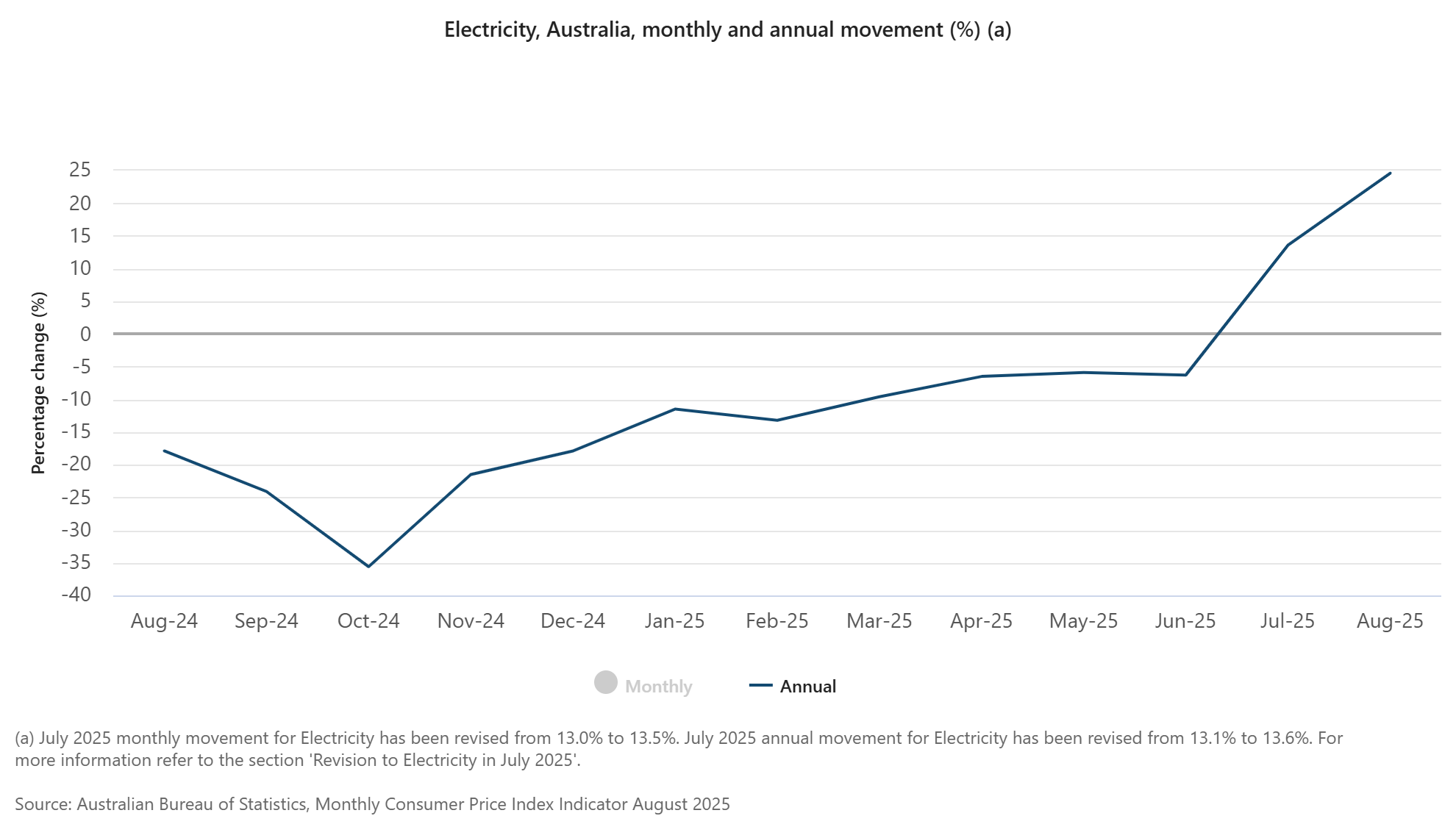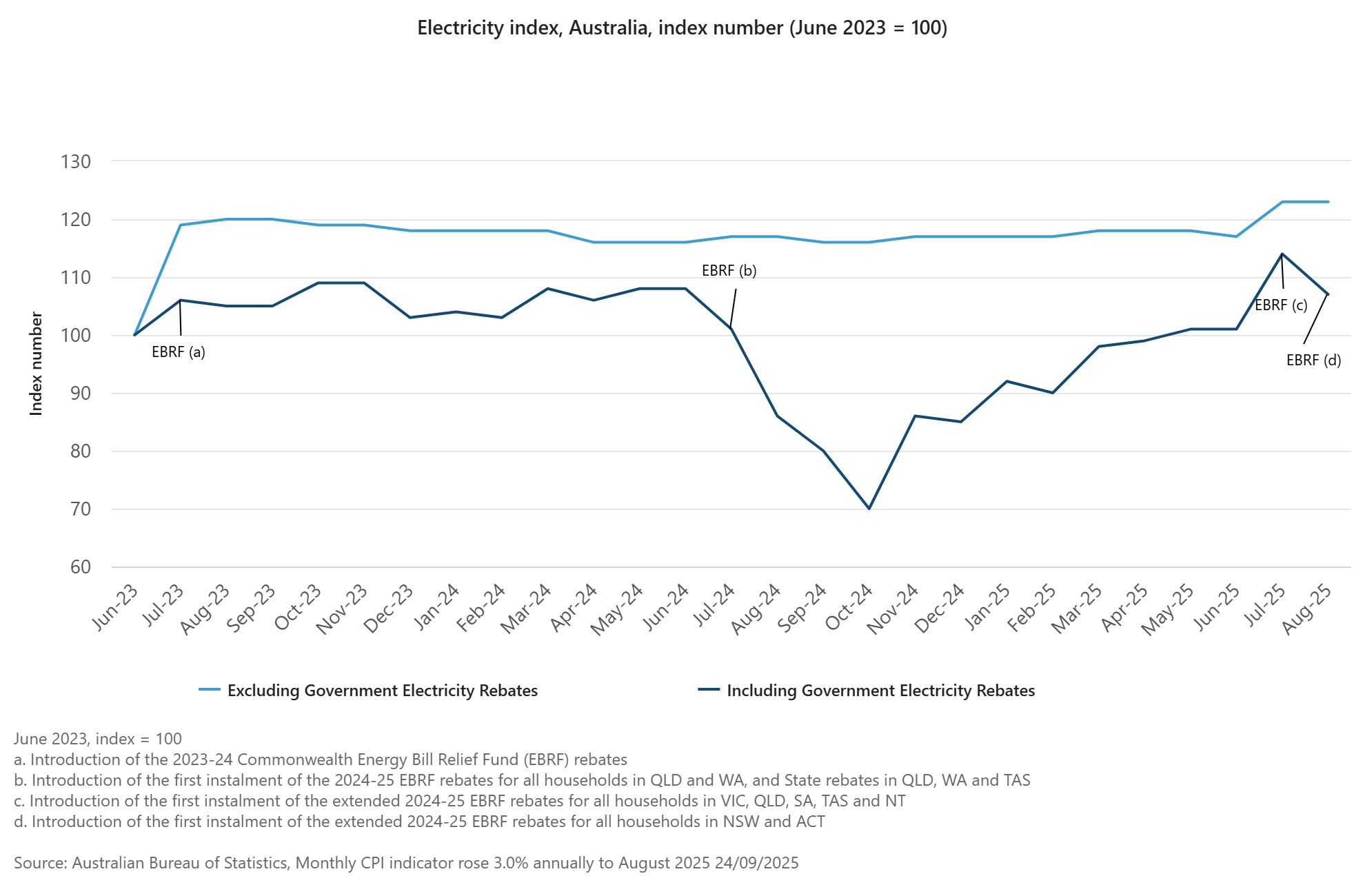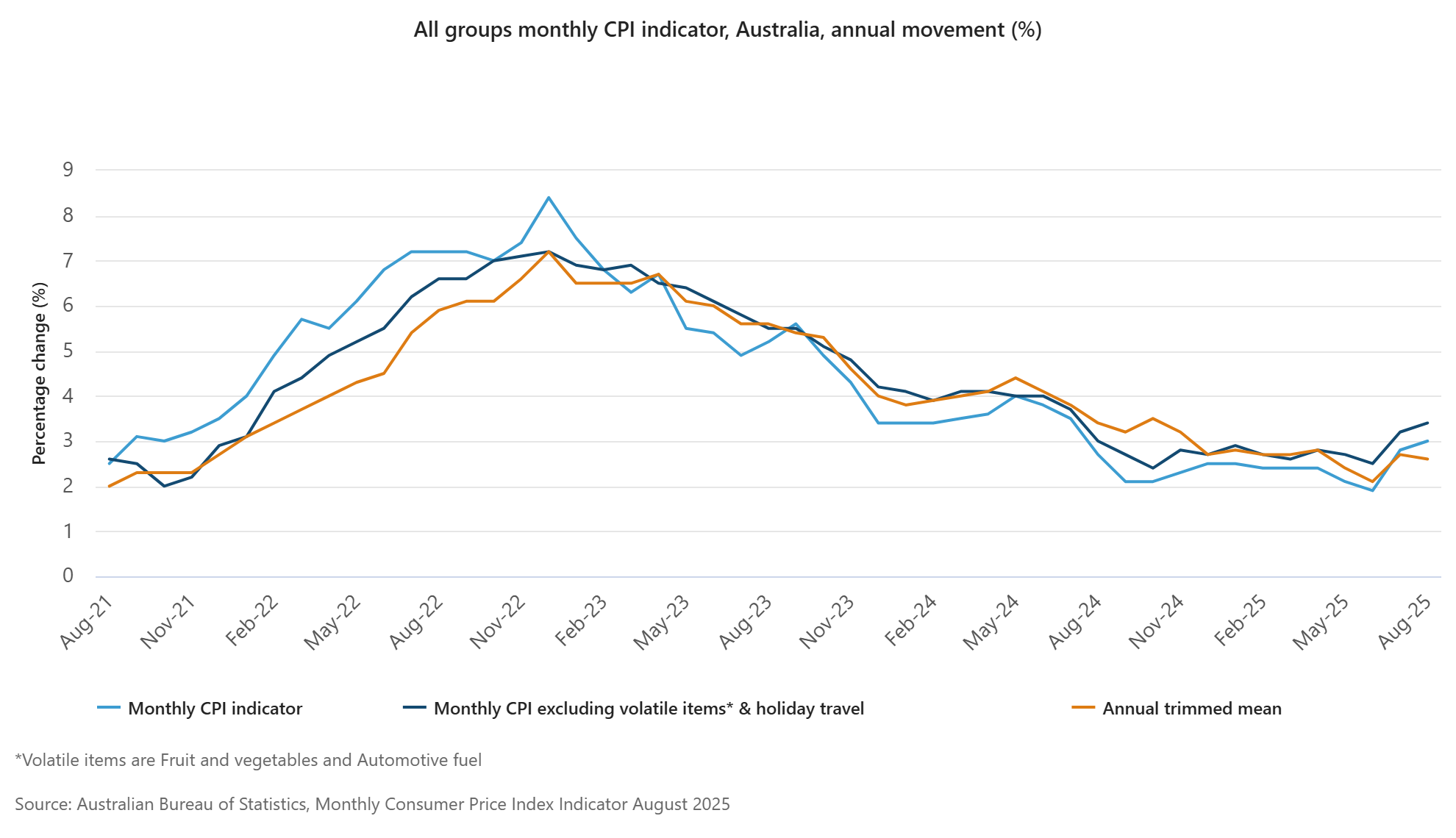Following the release of the monthly CPI for August, headlines about skyrocketing electricity prices began to circulate, highlighting the 24.6% year-on-year increase in electricity costs.
While that is certainly true as measured by the CPI, the reality is quite a bit more complicated, and the headline rise in power prices is going to worsen significantly in the months to come.

Today’s story kicks off in June 2023.
Without the impact of the Albanese government’s Commonwealth Energy Bill Relief Fund (ERBF), July 2023 would have seen the cost of household electricity bills rise by 19%.
Instead they rose by 6%, with the peak rise seen over the next 12 months at 9%.

The cost of electricity, as measured by the CPI, then plummeted due to a second round of ERBF subsidies for the 2024-25 financial year and additional state-based subsidies from the Queensland, WA, and Tasmanian governments.
Between June 2024 and October 2024, the measured cost of electricity fell by 35.2%.
This huge fall in the cost of a key household staple played a major role in driving down headline inflation, helping to create conditions conducive to the Reserve Bank cutting interest rates.

But now, as the various subsidies continue to unwind in the data, headline inflation is reaccelerating, and the rate of year-on-year electricity price inflation is expected to rise further.
In September, the lack of subsidy payments will see electricity price inflation reaccelerate.
But in October, the final Albanese government subsidy payment will once again see the rate of electricity price inflation fall.
Moving forward, it will take some time for the full impact of the various subsidies and the subsequent base effects to be fully reflected in the data.
Ultimately, for the majority of the last two and a half years, the impact of electricity subsidies has been beneficial to headline inflation. Now as base effects take over, the impact for inflation will turn decidedly toward a hotter contribution to the CPI.

